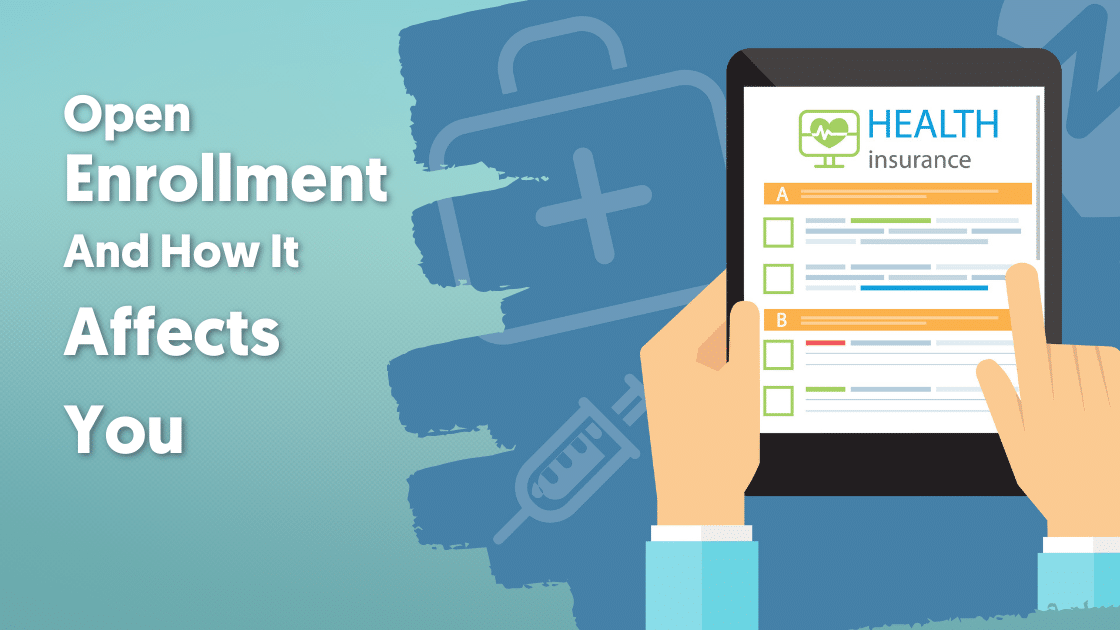With the new year quickly approaching, it’s only natural to start thinking about your health and of course, your health insurance. Maybe you saw your doctor more often than you anticipated. Or maybe you were thinking about trying a new way of taking care of your pain, like through physical therapy. Whether you want to change your insurance coverage or keep it as is, open enrollment is the time to do it. Learn all about open enrollment and how to make the best decisions for you and your family.
What Is Open Enrollment?
Open Enrollment is a window of time when you’re able to sign up for a new health insurance plan, change your existing coverage, or cancel your policy altogether. It typically happens every year around November and only lasts for a few weeks. If you miss your chance and the open enrollment period ends, you’ll have to wait until the next window to make changes.

Who Does Open Enrollment Apply To?
Not everyone uses open enrollment for their health insurance. But, if you get your insurance through the Affordable Care Act marketplace, through your employer, or through Medicare, then you’ll have an open enrollment window.
To be eligible for insurance through the marketplace, you must live in the United States and be a U.S. citizen. Also, you can’t have an existing Medicare policy, even if it’s only Part A or Part B coverage.
For those who get insurance through their work, the employer is the one who decides the open enrollment period. Most of the time it’s in the fall so your benefits can start on the first day of the new year.
Are you turning 65 or planning on retiring sometime in the near future? If so, you might be able to choose Medicare coverage. There are a few different enrollment periods, depending on your situation. Anyone turning 65 has a special enrollment window surrounding their birth month. This is when you can enroll for Part A, Part B, Part C, and Part D coverage. Existing Medicare members have their own enrollment window called the Annual Enrollment Period. This is where they can switch, drop, or join a plan. If you don’t take any action during that time, you’ll automatically be renewed with your current plan next year.
Now, let’s take a closer look at each of these windows…
When Does Open Enrollment Begin?
Insurance plans through the marketplace are usually open from November 1st to January 15th.
As previously mentioned, open enrollment through your work is determined by your employer. They usually choose a time near the end of fall so the new insurance plan can begin in the new year. However, some employers choose times throughout the year.
Medicare enrollment is a bit different. If you’re enrolling for the first time, then you actually have a 7 month enrollment period. The window opens 3 months prior to the month you turn 65 and extends for the 3 months after. If you’re already a Medicare member, then your enrollment window is during the Annual Enrollment Period.
Qualifying Life Events
Typically, you can only make changes to your health insurance during open enrollment. Regardless if you switched your policy or not, you normally would have to wait until the next window. There are, however, exceptions to this rule. If you experience a Qualified Life Event (QLE), you may be able to adjust your coverage even if your enrollment window has closed.
You’re probably wondering “what is a qualified life event?” Great question. A QLE is what you might consider a big life changing event. Sometimes these situations are planned, sometimes not. Either way, they usually impact you and/or your family and, in turn, your health insurance.
Some examples of QLE’s are getting married, divorced, having or adopting a baby, moving, turning 26, change in employment status, or a death of someone on your health plan. Occasionally, Special Enrollment Periods are offered during difficult times, like after a natural disaster or during a pandemic.
Depending on what kind of big moment you’re experiencing, most changes can be made to your health insurance 30-60 days after the event occurs. If it’s something you can plan for, try to be proactive and contact your insurance company as soon as possible. This way you’ll find out exactly when and how you can make changes to your healthcare coverage.
Important Enrollment Dates For 2024-2025
Now that you’re familiar with open enrollment, let’s take a look at some important dates for your upcoming 2025 insurance coverage…
Marketplace enrollment typically starts November 1st, and this year is no exception. The window for individual and family plans opens on November 1st, 2024 and closes (for most states) on January 15th, 2025. If you want your coverage to start on January 1st though, you have to enroll by December 15th. If you enroll after, your coverage won’t begin until February 1st.
As for Medicare, their general open enrollment opens on October 15th, 2024 and runs through December 7th, 2024. If you’re enrolling in Medicare for the first time, then your enrollment begins 3 months prior to your birth month. So, if you turn 65 during February, 2025 your enrollment period is currently open. You’ll also have an additional 3 months following your birth month to enroll as well. It’s worth noting that if you miss your enrollment period, you can still sign up for Medicare Part A, Part B, and Part D coverage, but with some costly penalties attached.
How To Make The Most Of Open Enrollment
Many of the insurance companies offer different types of plans to choose from, all with different levels of coverage. In order to make the most of open enrollment, there are a few things to consider.
First, how much can you afford to spend on deductibles, monthly premiums, and out-of-pocket costs? Try taking a look at your healthcare expenses and compare them with the past few years. Did the amount you and your family spend line up with your healthcare needs, or should you make some adjustments?
Generally, plans with lower ↓ monthly premiums have higher ↑ deductibles. And plans with higher ↑ monthly premiums usually have lower ↓ deductibles.
So, if you’re fairly healthy and don’t tend to visit the doctor often, an insurance plan with a higher deductible and lower monthly premiums may be advantageous. Likewise, if you know you’re going to be needing quite a bit of medical care, you might consider a plan with higher monthly premiums but more overall coverage by the insurance company.
Next, make a list of which doctors you see and whether they’re in your plan’s network. Most of the time, healthcare costs are less expensive when the services are through in-network providers. The same applies for medication coverage.
You’ll want to keep all of these things in mind so you select a plan that best fits your needs. Click here to learn more about understanding health insurance.
You can also check your health insurance coverage and benefits online here: Check Insurance Benefits



